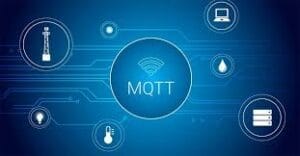With the explosive growth of IoT devices, traditional network protocols are facing new challenges like a surge in connected nodes, power consumption concerns, and diverse deployment environments. Especially in large-scale wireless sensor networks (WSNs), low-power wide-area networks (LPWANs), and battery-powered smart terminals, achieving efficient, low-power, and stable connections for thousands of devices has become a major technical hurdle.
In this context, MQTT-SN (MQTT for Sensor Networks)—a lightweight evolution of the MQTT protocol—has emerged as an ideal standard for low-power and large-scale IoT communication. It retains MQTT’s simplicity and efficient publish/subscribe model while being deeply optimized for wireless networks, embedded microcontrollers, and non-IP environments, making it a cost-effective protocol choice for IoT solution providers and platform developers.
What is MQTT-SN and Why It Matters for Low-Power Communication
What is MQTT-SN?
MQTT-SN, short for Message Queuing Telemetry Transport for Sensor Networks, is a lightweight messaging protocol defined by OASIS for IoT scenarios.
Compared to standard MQTT, MQTT-SN is optimized for non-IP networks like WSN, Zigbee, LoRa, and NB-IoT. It supports lower power usage, smaller message sizes, and more flexible addressing mechanisms.
Key Features:
- Ultra-light packet design; headers can be as small as 2 bytes
- Topic ID addressing for better efficiency in low-bandwidth scenarios
- Operates over UDP, serial ports, LoRa, and other non-IP links
- Built-in sleep mode for long-term low-power standby
- Fully compatible with MQTT servers via gateway conversion
Network Architecture of MQTT-SN
Unlike standard MQTT (which is TCP/IP-based and follows a “client-broker” model), MQTT-SN typically includes three layers: Client - Gateway - Broker.
MQTT-SN Network Architecture & Communication Flow

- Client Nodes: Wireless sensors and low-power devices collecting and transmitting data
- Gateway: Handles local protocol adaptation and aggregation (MQTT-SN to MQTT conversion), runs on embedded or edge devices
- Broker: Cloud MQTT server responsible for message routing and distribution
MQTT-SN vs Traditional IoT Protocol: Benefits and Tradeoffs
Limitations of Traditional MQTT
While MQTT is widely used in IoT, it falls short in these areas:
- Power consumption: TCP-based keep-alive connections are unsuitable for battery-powered devices
- Protocol overhead: Headers and topic strings consume bandwidth, problematic for low-speed networks
- Poor support for non-IP networks: Hard to deploy over LoRa, Zigbee, RS485, etc.
- Scalability: Performance drops significantly when managing thousands of nodes
MQTT-SN Advantages & Common Use Cases
- Ultra-low power: Supports deep sleep and optimized keep-alive
- Lightweight payload: Topic IDs replace long text, minimizing message size
- Highly compatible: Works on UDP, serial, and other constrained links
- Scalable: Handles thousands of device connections efficiently
- Cloud-ready: Seamless protocol conversion via gateway to standard MQTT platforms
Inside MQTT-SN: Lightweight Messaging and Power-Saving Features
1. Data Packets and Communication Process
MQTT-SN packets are much more compact than MQTT. A typical packet includes fields like Length, Message Type, Topic ID, Payload, etc., and can be as small as 2–4 bytes.
Typical Packet Format:
| Field | Length (bytes) | Description |
|---|---|---|
| Length | 1 or 2 | Total packet length |
| MsgType | 1 | Message type (e.g., CONNECT) |
| Flags | 1 | QoS, retain, DUP flags |
| TopicId/Name | 2 | Topic ID or registration name |
| MsgId | 2 | Message identifier |
| Payload | N | Application data |
Notes:
- Binary encoding saves bandwidth
- Topic ID mechanism reduces message overhead
- Optional “Will” feature supports disconnection events
Example Communication Flow (sensor reporting):
- Device powers on and sends a Connect request to the gateway.
- Device registers or subscribes to a topic.
- Device sends data via Publish with Topic ID and payload.
- Device can request sleep mode; the gateway buffers downstream messages.
- Cloud commands are sent via Broker → Gateway → Device, ensuring reliable delivery.
2. Key Mechanisms in Detail
Topic Registration and ID Addressing
MQTT-SN uses Topic ID addressing to avoid long string topics.
- Devices use the Register message to declare a topic and receive a unique ID.
- All further communication uses the 2-byte Topic ID, saving bandwidth.
QoS and Acknowledgment
MQTT-SN supports the same QoS levels as MQTT:
- QoS 0: At most once (no ACK, ultra-efficient)
- QoS 1: At least once (ACK required, for critical data)
- QoS 2: Exactly once (ensures reliability via handshake)
Sleep and Offline Modes
- Devices can enter sleep mode to extend battery life
- Gateways buffer messages while devices are offline
- Ideal for periodic data reporting in low-power wireless setups
Protocol Adaptation
- Operates over non-IP protocols like UDP, RS485, LoRa, Zigbee
- Reduces terminal hardware and software complexity
3. Protocol Comparison
| Aspect | MQTT-SN | MQTT | CoAP | LoRaWAN | Zigbee |
|---|---|---|---|---|---|
| Connection | Stateless/light | TCP persistent | UDP | ALOHA access | Mesh network |
| Stack | UDP/Serial/Radio | TCP/IP | UDP/IP | LoRa PHY/MAC | IEEE 802.15.4 |
| Packet Size | Very small (2–7B) | Moderate | Small | Moderate | Small |
| Sleep Support | Fully supported | KeepAlive only | Token-based | Fully supported | Partial |
| Ideal Use | Low-power WSN/LPWAN | Indoor IoT/Industry | Constrained IoT | Long-range, low-power | Zigbee networks |
| Cloud Support | Gateway bridging | Widely supported | Needs custom server | Proprietary | Requires gateway |
4. Engineering Best Practices
- Gateway Selection: Choose gateways with high concurrency, message buffering, and protocol conversion.
- Device Design: Use low-power MCUs with minimal protocol stacks (e.g., STM32, NRF52).
- Protocol Stack: Use stable MQTT-SN libraries like Eclipse Paho, emqtt-sn, or Mosquitto for C/embedded/Java.
- Data Security: Implement link-layer encryption and authentication where possible.
MQTT-SN Use Cases in Sensor Networks and Utilities
1. Smart Agriculture
In large smart farms, thousands of soil, temperature, humidity, and light sensors operate on batteries and are spread across long distances.
Using MQTT-SN, these devices periodically wake up and report data with minimal energy. Gateways aggregate and forward data to the cloud for cost-effective and scalable monitoring.
--- title: "Smart Agriculture: MQTT-SN Multi-node Monitoring Architecture" --- graph TD; A["Temp & Humidity Sensor (MQTT-SN Client)"] --> B["LoRa/RS485 Link"] B --> C["MQTT-SN Gateway / Edge Node"] C --> D["MQTT Broker (Cloud/Local)"] D --> E["Agri Big Data Management Platform"] E --> F["Mobile/PC Maintenance App"] D --> G["Auto Alerts / Environmental Control"] C --> H["Local Buffering & Batch Sync"]
Key Benefits:
- High sleep ratio, over 2 years battery life
- Supports various links (LoRa/RS485/mesh)
- Seamless integration with MQTT platforms
2. Smart Utility Metering
In residential or industrial areas, water, electricity, and gas meters require remote data collection.
Instead of costly GPRS/4G, MQTT-SN with wireless modules like NB-IoT or LoRa provides simple and scalable deployment, with gateways handling collection and transmission.
Improvements:
- One site can manage thousands of meters
- Real-time reporting and quick maintenance response
- Lower power usage and reduced deployment cost
3. Industrial Equipment Monitoring
In factories or remote stations, sensors monitor vibration, temperature, and pressure.
MQTT-SN enables compact and efficient reporting with local caching and reliable cloud syncing via gateways.
Engineering Advantages:
- Easily integrates heterogeneous devices
- Supports resume and retransmission on failure
- Edge gateway filters data to reduce cost and improve efficiency
MQTT-SN Implementation Guide for IoT Projects
- Device-Side Tips
- Use MCUs with low-power wakeup and compact stacks
- Register short, batch topic IDs to save bandwidth
- Enable local caching for poor network conditions
- Gateway/Edge Layer
- Prefer gateways supporting multi-protocol conversion (MQTT/MQTT-SN/CoAP/Serial)
- Look for support for message buffering, QoS, OTA updates
- Choose industrial-grade products with remote management features
- Cloud Integration
- Use mainstream MQTT brokers (e.g., EMQX, Mosquitto, HiveMQ)
- Implement topic mapping, access control, and data processing
- Recommend secure data encryption and device authentication
Future of MQTT-SN in Low-Power IoT Communication
- Edge-Cloud Integration: MQTT-SN enables real-time decisions at the edge and facilitates big data processing in the cloud, thereby enhancing system resilience and scalability.
- Heterogeneous Network Support: More devices will run on non-IP/mixed networks, and MQTT-SN’s flexibility will shine.
- AI Integration: With edge AI, devices can adjust reporting strategies intelligently based on collected data.
- Protocol Evolution: As IoT grows, MQTT-SN will gain more open-source implementations, gateway modules, and integration tools, lowering development barriers.
As a vital part of the IoT protocol family, MQTT-SN provides a solid foundation for massive, low-power, and heterogeneous device access.
It complements MQTT’s weaknesses in wireless, non-IP, and constrained environments, empowering industries like smart agriculture, utility metering, and industrial automation.
For solution providers and platform developers, leveraging MQTT-SN is a key step toward building more efficient, scalable, and cost-effective IoT systems.
FAQ:
Q1: What is MQTT-SN used for in IoT?
A1: MQTT-SN is designed for low-power and large-scale IoT sensor networks. It reduces communication overhead and supports non-IP protocols, making it ideal for LPWAN and battery-powered devices.
Q2: What’s the difference between MQTT and MQTT-SN?
A2: MQTT uses TCP/IP, while MQTT-SN runs over UDP or serial links. MQTT-SN also supports topic IDs and sleep mode for better performance in constrained environments.
Q3: Is MQTT-SN suitable for LoRa and Zigbee?
A3: Yes. MQTT-SN is optimized for non-IP networks like LoRa, Zigbee, and RS485, enabling lightweight and efficient messaging without requiring full IP stacks.
Q4: Can MQTT-SN work with standard MQTT brokers?
A4: Absolutely. MQTT-SN clients communicate via a gateway that translates MQTT-SN messages to standard MQTT format for compatibility with brokers like EMQX and Mosquitto.


